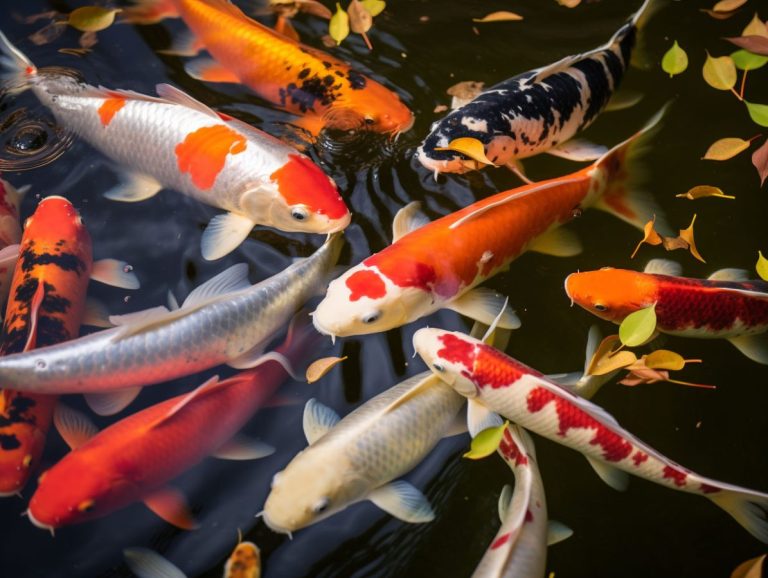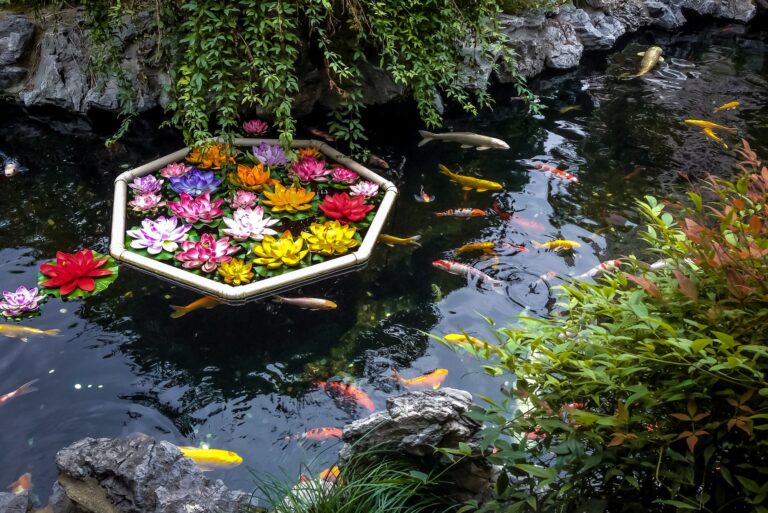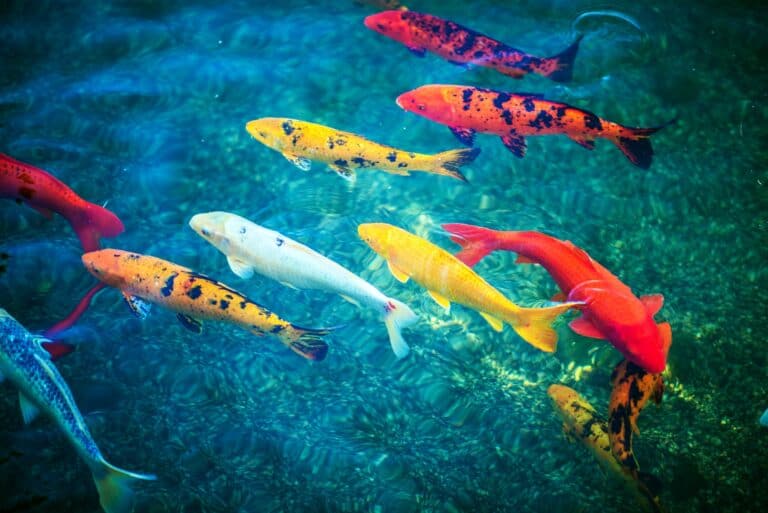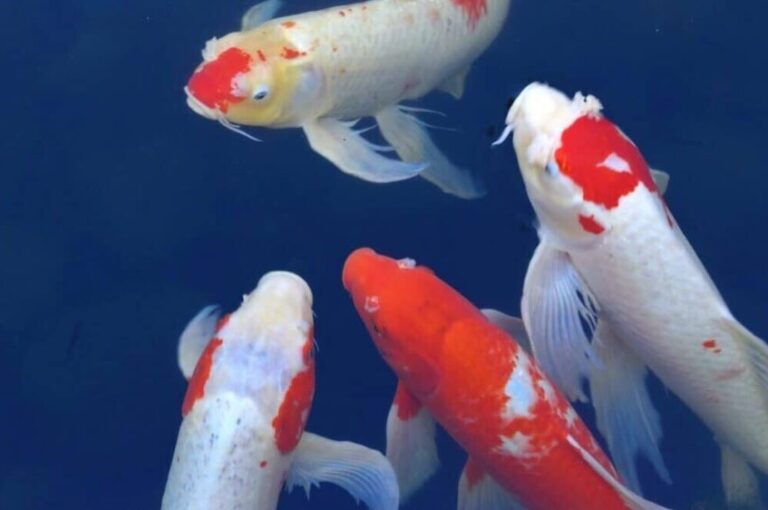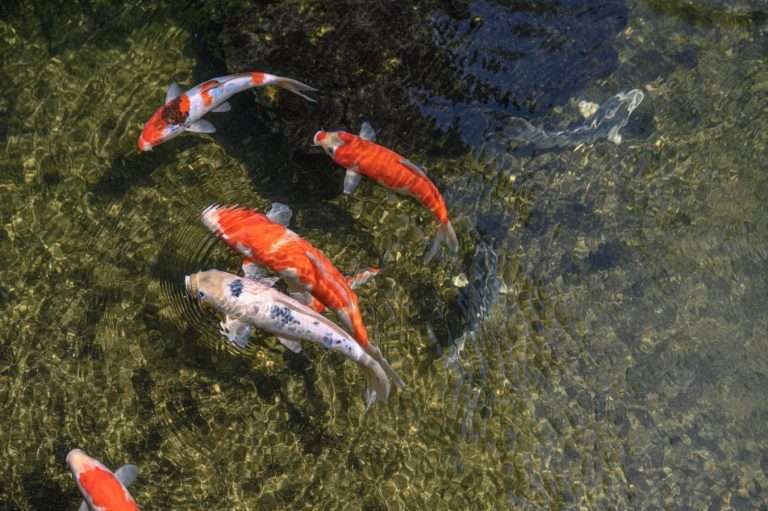Good Koi Health Requires High Water Quality
Your pond may be a hole in the ground filled with water, but that water is crucial and life-sustaining for your Koi. If you ignore water quality, your fish may be basically living in a sewer. There are a few basic things a successful pond owner needs to know about maintaining good water quality.
If you want healthy Koi, you must ensure they live in a clean, well-maintained pond with the best water quality you can provide. Water quality may be the number one factor in whether or not your Koi live long, healthy lives.
How Do You Measure Your Water Quality?
Dirty water is not good for your fish but is suitable for growing bacteria and other dangerous [wiki]pathogens[/wiki]. You can not always tell how good your water quality is by just looking at your pond. Of course, if you see any debris, leaves, and other muck floating on the surface of a murky green pond, you can be sure your fish are living in unsafe conditions.
If you have a freshwater aquarium, you will probably have mastered the art of testing water. Your Koi are living in a giant outdoor aquarium. They need their water quality to be just as good as that in your aquariums.
Fortunately, there are test kits you can easily use to test your water. These kits are made for ordinary people like you and me, so you don’t need a microbiology degree to use them. Just be sure to follow the directions.
What Do Test Kits Measure
The two most important tests are pH (the acid level of water or the potential of hydrogen) and the nitrogen cycle (ammonia, nitrites, and nitrates). Why is the H capitalized? I missed school that day, but The H is capitalized because it is the atomic symbol for hydrogen, and the first letter of the atomic symbol is always capitalized. It must be a law passed by chemistry teachers.
What is pH?
We don’t need a college chemistry lesson to understand [wiki]pH[/wiki]. A high school class will do just fine. The pH of a substance can vary from 0 to 14. At 0 pH, you will have a pure acid, like battery acid. Don’t test it with your fingers.
If we get all the way to a pH of 14, we will have something like sodium hydroxide, which is lye. You don’t want to pick up a hand full of that either.
Leaving chemistry class for a while, we now need to recall our second-grade math. (Maybe it wasn’t second-grade math, but I recall hearing something about logarithms a long time ago.) to calculate pH, use the formula: pH = – log [H3O+] Or compare the water’s color in your test tube with the chart that came with your test kit.
For [wiki]Goldilocks[/wiki] fans, water is just right at 7.0 pH, halfway between 0 and 14. Personally, for my pond, I want the pH to be between 7 and 8. Fish like the pH to be about 7.4 but can survive with a range of 6 to 9.5.
This is a graphic of pH ripped from the EPA website (pictures are much better than words):

What If the pH Is Too High Or Too Low?
Stuff lives and breathes in ponds that change the amount of carbon dioxide (CO2) in the water. The pH of your pond will change throughout the day. As your pond matures, its pH will stabilize, and changes will lessen throughout the day.
How to Increase pH
If your pond pH is too low, below 6.5, for example, you can use baking soda to increase it. Add about one teaspoon for every 5-10 gallons of pond water. Don’t just dump the baking soda into the pond; mix it with some pond water in a bucket and slowly pour it back into the pond.
How To Decrease pH
You can use white vinegar to raise the pH. Use about 1/4 cup of vinegar for every 500 gallons of water. After 12 hours or so, retest before adding any more vinegar.
Whether you are trying to increase or decrease pH, do it slowly. A sudden change in pH will be stressful for the fish, and you may do more harm than good with sudden pH changes.
The next step in understanding water quality in our ponds is learning about the nitrogen cycle and its importance.
What Is The Nitrogen Cycle
Back to chemistry class for a minute. Ammonia, nitrites, and nitrates are stages of the nitrogen cycle. The chemical formula for ammonia is NH3, nitrites NO2, and nitrate is NO3. Notice the capital letters and how the numbers are in subscripts. This will be on the test.
Basically, the nitrogen cycle is when bacteria and fungi convert ammonia into nitrites, and then other similar little critters convert nitrites into nitrates. High levels of ammonia are dangerous or even fatal for fish. Nitrites are not as bad as ammonia but can still be harmful. Nitrates are not usually a problem for fish, but if nitrates levels get too high, you may have a problem with algae.
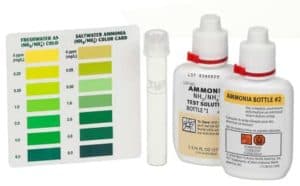
Ammonia is a natural byproduct of the digestive system. Fish excrete ammonia mainly through their gills and some from their feces.
If not enough bacteria are present to convert the ammonia, as will be the case in a new pond or aquarium, ammonia levels get high reasonably fast. We prevent this by adding fish slowly, especially at first, so bacteria have time to grow on the filter material.
What To Do If Ammonia Is Too High
The best way to prevent an ammonia problem is to proceed with caution when adding fish. But that is not always what people do. I’ve been there. You have a lovely pond; I can’t wait to fill it with fish.
Next thing you know, the water in your test tube is dark green. Then maybe you feed your fish too much. For emergency use or as a protective measure, you can add products to your water that will keep ammonia from being toxic to your fish. One product I often use is called Prime. Whenever I make a water change or add water, I also use Prime to remove chlorine.
What About High Nitrates
High levels of nitrates are usually not a problem for fish. However, nitrate is found in many fertilizers and helps plants grow. Algae is not a plant but plant-like because it eats nitrates. It seems to love nitrates. If your nitrate levels get high, expect an algae bloom. I don’t mean flowers. I mean, a bunch of green stuff in your pond.
In an aquarium, you can do frequent water changes to reduce nitrates. This isn’t easy to do in a pond. Using plants such as watercress, irises, and water lilies will help get nitrates under control and make your pond pretty. You will need to monitor them to ensure they do not grow out of control.
Another tool for stopping or removing algae growth is a UV sterilizer. For small ponds, you can use a product to remove algae, such as ALGONE.
What To Do About Hard Water
Some city water systems, like Las Vegas, where I live, have very hard water. Using a TDS (total dissolved. solids) meter, you can test your water’s hardness. You can use distilled water or rainwater when you top off your pond. Another method is to use a reverse osmosis system or a water conditioning product.
Conclusion
Koi fish can survive in many different water conditions. However, if you keep your water quality high, you will have healthier fish. The fish have no control over water quality, so it is up to you to do it for them.
Originally posted 2022-10-19 10:30:46.






